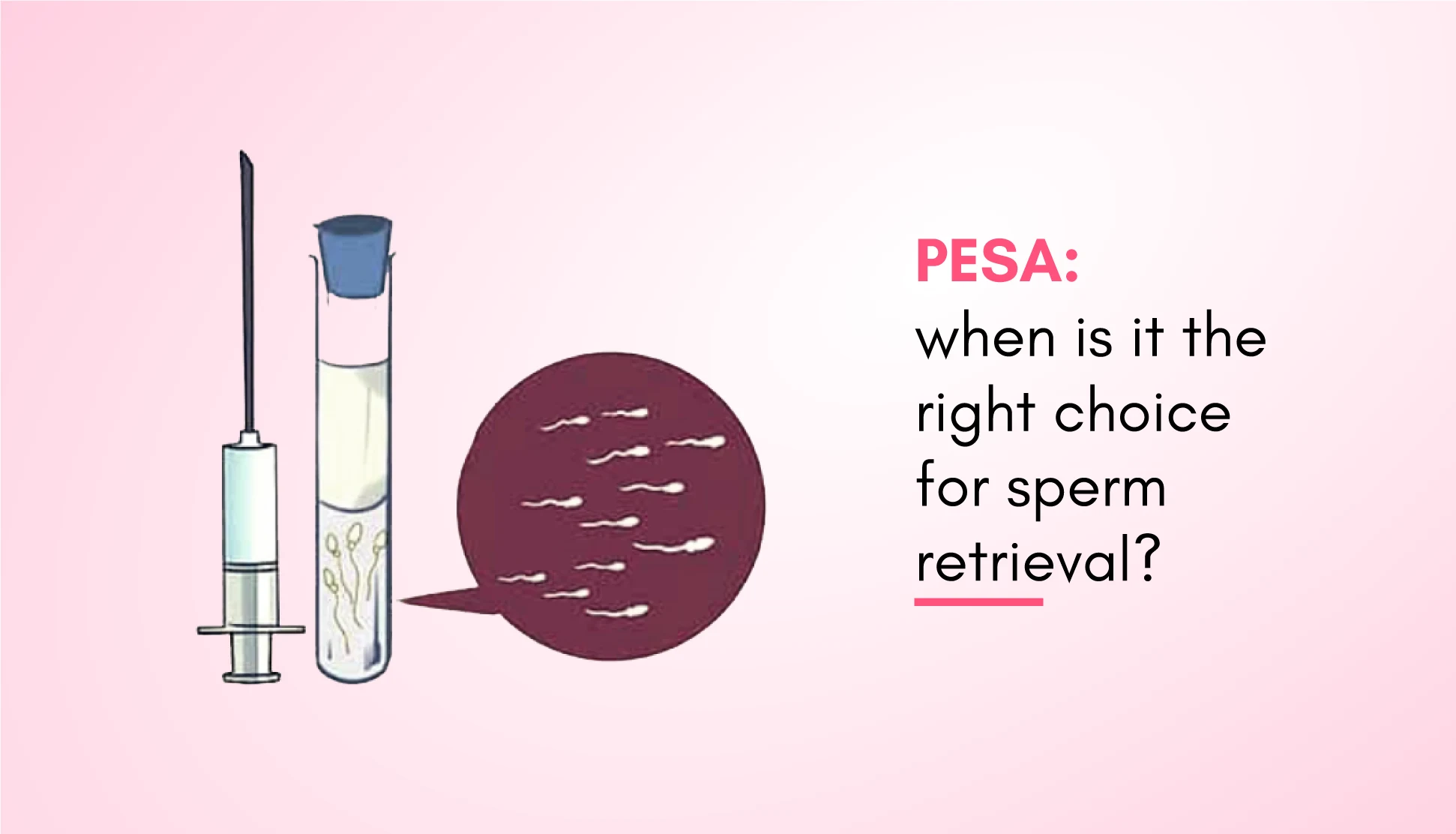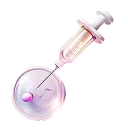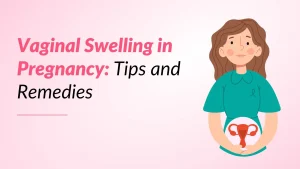The sperm retrieval procedure is a crucial step for fertility treatment that involves extracting sperm cells directly from the testicles or epididymis. Epididymis is the small, coiled tube at the back of the testicles where sperm is stored. This procedure is often necessary for men who are unable to produce sperm through ejaculation, either due to a medical issue or a previous vasectomy or where the quality or quantity of sperm is insufficient for natural conception.
Fertility experts perform sperm retrieval procedures by using various techniques. One such method is Percutaneous Epididymal Sperm Aspiration (PESA), which is the focus of this article.
Also Read: What are effective methods of treating male infertility?
Why is Sperm Retrieval Performed?
There are several reasons why a man may need to undergo sperm retrieval, including:
- Azoospermia: A condition where the man is unable to produce sperm in his ejaculate. It occurs most commonly due to a blockage or obstruction in the reproductive tract.
- Vasectomy: Sometimes, doctors may require sperm retrieval to obtain viable sperm after vasectomy (birth control surgical procedure) due to various medical factors.
- Testicular Failure: Conditions that affect the testicles, such as undescended testicles, varicocele, or injury, can lead to reduced sperm production.
- Genetic Conditions: Certain genetic disorders, such as Klinefelter’s syndrome, can affect sperm production and necessitate sperm retrieval.
- Ejaculatory Duct Obstruction: This condition manifests as a blockage in the ducts that transport sperm cells from the testicles to the urethra. This obstruction can prevent sperm from being released during ejaculation.
Also Read: Male Infertility Problems and Treatment Options
About Percutaneous Epididymal Sperm Aspiration (PESA)
Percutaneous Epididymal Sperm Aspiration (PESA) is a procedure that causes minimal tissue damage. It retrieves sperm directly from the epididymis (the coiled tube that stores sperm). During the PESA procedure, a thin, hollow needle is inserted through the skin and into the epididymis, and a small amount of fluid containing sperm is then drawn out using a syringe.
Fertility specialists use the retrieved sperm for in vitro fertilization or intracytoplasmic sperm injection. ICSI is a specialised form of IVF where the doctor injects a single sperm directly into an egg.
What to Expect During Percutaneous Epididymal Sperm Aspiration (PESA)?
The doctors perform PESA under local anaesthesia. It means the patient is awake during the procedure, but the area around the testicles is numbed. The procedure usually takes less than 30 minutes to complete.
Here’s a step-by-step overview of what to expect during a PESA procedure:
- The medical team will position the patient on an exam table and thoroughly clean the skin over the testicles.
- The gynaecological surgeon administers a local anaesthetic to numb the area.
- The surgeon then inserts a thin, hollow needle through the skin and into the epididymis, guided by ultrasound imaging to ensure accurate placement.
- Once the needle is in place, the doctor uses a syringe to gently aspirate (or draw out) a small amount of fluid containing sperm.
- After a thorough inspection, the gynaecological surgeon removes the needle and bandages the area.
- The patient is monitored briefly after the procedure to ensure no complications.
After the PESA procedure, the patient may experience mild discomfort or swelling in the testicle area, but this typically resolves within a few days.
Related Read: Why Dropping One’s Tobacco Habit is Important for Male Infertility?
Who are Candidates for Percutaneous Epididymal Sperm Aspiration (PESA)?
PESA may be a good option for men who meet the following criteria:
- Azoospermia: Men with azoospermia condition can be good candidates for PESA.
- Vasectomy: Men who have undergone a vasectomy and are now seeking to have children can seek help through this procedure.
- Testicular Failure: Men with conditions that affect the testicles, such as undescended testicles, varicocele, or injury, which can lead to reduced sperm production, are good candidates for PESA.
- Genetic Conditions: Men with certain genetic disorders, such as Klinefelter’s syndrome, which impacts sperm production, can benefit from PESA.
- Ejaculatory Duct Obstruction: Men with a blockage in the ejaculatory ducts can be candidates for PESA.
It’s essential to remember that not all men with these conditions will be suitable candidates for PESA, and a thorough evaluation by a fertility specialist is necessary to determine the best course of action.
Related Read: Fertility and Nutrition: Foods and Supplements That May Boost Male Fertility
Is Percutaneous Epididymal Sperm Aspiration (PESA) Right for Me?
If you are experiencing difficulties with sperm production or ejaculation, it’s essential to consult with a fertility specialist to identify the underlying cause and the most appropriate treatment option. PESA may be a viable choice, but weighing the potential benefits and risks is crucial based on your specific situation.
Some key factors for considering PESA include:
- Your medical history and the underlying cause of your fertility challenges
- The availability and quality of sperm obtained through the PESA procedure
- The potential need for additional assisted reproductive techniques, such as IVF or ICSI
- The risks and potential after-effects associated with the PESA procedure
- Your personal preferences and comfort level with the procedure
Your fertility specialist will be able to provide you with more detailed information and guidance on whether PESA is the best option for your unique situation. They can also discuss alternative sperm retrieval techniques, such as Testicular Sperm Extraction (TESE), and help you make an informed decision that aligns with your family-building goals.
Also Read: How to increase sperm count and motility
Conclusion
Percutaneous Epididymal Sperm Aspiration (PESA) is a valuable sperm retrieval option for men facing various fertility challenges. By directly accessing the epididymis, PESA can be an effective way to obtain viable sperm for use in assisted reproductive techniques. However, working closely with a fertility specialist is essential to determine if PESA is the right choice for your situation. With the proper medical guidance and support, PESA can help you and your partner take meaningful steps towards building the family you’ve been dreaming of.




























